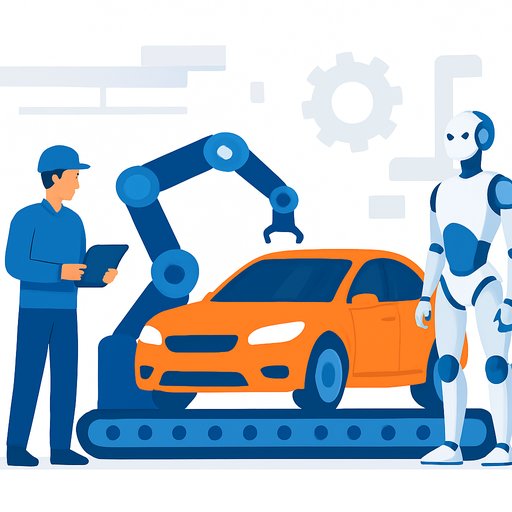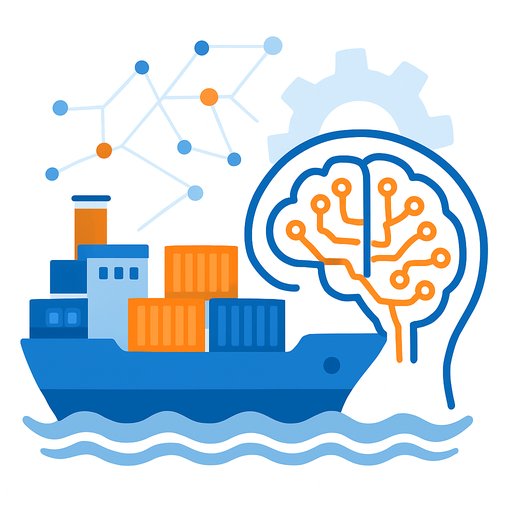Driving intelligent automotive manufacturing: how robotics and AI are transforming OEM operations
Robots are already embedded in automotive plants. What's new is how fast they're becoming smarter through AI, agentic systems, and lightweight models like liquid neural networks. For Operations leaders, that shift isn't academic. It's a direct path to higher throughput, more consistent quality, and safer lines-without ripping and replacing existing assets.
Why robotics is surging again
Industry investment is climbing because the mix of robotics and AI is finally practical at plant scale. One estimate puts the automotive robotics market rising from around $9B in 2024 to about $22.5B by 2033. The draw: robots that don't just repeat tasks-they perceive context, adapt, and work alongside people.
This is physical AI: software plus machines that can sense, decide, and act in the physical world. On a line, that means automated inspection with superhuman precision, and defect detection that picks up micro-scratches, misalignments, or paint drift that humans miss. It also means fewer bottlenecks from manual checks and rework.
Add AI to the robots you already own
Most plants can't justify replacing fleets of working robots. You don't need to. Add AI at the edge, connect it to your existing robots, and let the system provide context awareness, perception, and decision-making. Hybrid edge-to-cloud platforms coordinate the flow, while digital twins validate behavior before you push to production.
Result: smarter cells, faster changeovers, and fewer surprises during commissioning.
What Operations teams can expect
Increased productivity and efficiency
- 24/7 operation: Continuous work without breaks drives higher throughput and shorter cycle times.
- Higher speed: Robots complete tasks faster, compressing takt time.
- Lower direct labor: Automation absorbs repetitive tasks and reduces manual intervention.
Enhanced quality and precision
- Consistency: Programmed execution delivers uniform results across shifts and plants.
- Less waste: Better accuracy cuts scrap and rework.
Improved workplace safety
- Hazardous tasks: Robots take on heat, chemical exposure, and other high-risk jobs.
- Ergonomics: Fewer strain injuries from repetitive motion and heavy lifts.
Flexibility and scalability
- Adaptability: Quick reprogramming supports model mix, variants, and demand spikes.
- Scalability: Expand cells and capacity without overhauling the line.
Humanoid robots: useful, with caveats
Humanoid robots are coming to automotive, especially for multipurpose work in human-centric spaces using existing tools. But there are real constraints today: cost, limited battery life, slower speed and strength versus fixed automation, safety assurance, and programming complexity. They make sense where flexibility, collaboration, and frequent task changeovers matter more than raw speed.
High-value use cases to start
- Quality inspection: AI vision systems that spot surface flaws, alignment issues, and paint inconsistencies in real time.
- Materials handling: Cobots that stage parts, feed cells, and support operators without fencing.
- Adaptive assembly: AI-guided movements based on live visual feedback for cable routing, fastener placement, and transmission fit-up.
Key technologies you'll need to adopt
- Hybrid AI with liquid neural networks (LNNs): Easier to train, efficient on compute, and more explainable than large language models-useful for plant validation and root cause analysis. See research from MIT on liquid networks here.
- Digital twins for validation: Test cell logic, path planning, vision thresholds, and safety limits before deployment to reduce rework.
- Sustainability by design: Prefer efficient AI architectures (including LNNs) to reduce power draw and cooling footprint.
Technical work you'll need to plan for
- Diverse hardware ecosystems: Standardize interfaces and build reusable modules to cut engineering time.
- Data integration: Normalize across heterogeneous IT/OT systems and formats.
- AI control: Develop and maintain models that can perceive state, decide actions, and recover from edge cases.
- Low latency: Push time-critical logic to the edge for mission-critical cells.
Organizational shifts that reduce risk
- Task allocation: Define what robots own end-to-end, what stays human-led, and where collaboration is safest.
- Upskilling: Train operators, techs, and engineers to work with robotic systems and interpret AI decisions.
- Trust and transparency: Use explainable models (e.g., LNNs) and share clear limits of what robots can and can't do.
- Change management: Set expectations early on job impact, growth paths, and safety protocols.
Work with an ecosystem, not a single vendor
This space moves quickly. Most teams blend internal expertise with partners across simulation, AI, hardware, and cloud. Common players include Nvidia, Unity, Dassault Systèmes, Siemens, Microsoft, Google Cloud, AWS, and specialists like Liquid AI. For benchmarking and adoption trends, the International Federation of Robotics is a useful reference here.
From automation to physical AI: a practical framework
- Challenge: Engineering costs and time to operation
- Drivers: Diverse hardware, low solution reusability, hardware-dependent development, high manual coding, rework during commissioning, high maintenance.
- Approach: Modular Platform for Automation Engineering (URC) to standardize, reuse, and accelerate deployment.
- Challenge: Exploiting physical AI
- Drivers: Legacy systems with limited hardware/software, low-latency needs, large AI models to control operations, poor environment awareness.
- Approach: Edge AI Robotics Suite to add perception, planning, and control at the cell with tight latency guarantees.
- Challenge: Integration into the ecosystem
- Drivers: Mixed hardware, low-latency demands, inconsistent data formats across IT/OT, heavy AI workloads.
- Approach: Hybrid edge-to-cloud platform, reference architecture, and reusable assets for secure, scalable integration.
90-day playbook for Operations
- Weeks 1-3: Map high-ROI use cases. Prioritize AI vision for QA and one adaptive assembly cobot cell.
- Weeks 4-6: Build a lightweight digital twin of the target cell. Define KPIs, safety limits, and latency budgets.
- Weeks 7-10: Stand up an edge stack, integrate with existing robots, and run closed-loop tests in the twin.
- Weeks 11-13: Pilot on-shift with clear success criteria. Train operators and techs. Document failure modes and escalation paths.
Bottom line
AI-enabled robotics gives automotive manufacturers a direct path to higher OEE, consistent quality, and safer work. You don't need to refit the plant-start by adding AI at the edge, validate in a twin, and scale what works. Keep humans in the loop, build trust with explainable models, and use partners where it speeds learning and reduces risk.
If you're building skills for automation, computer vision, or edge AI, see practical training options here.
Your membership also unlocks:





